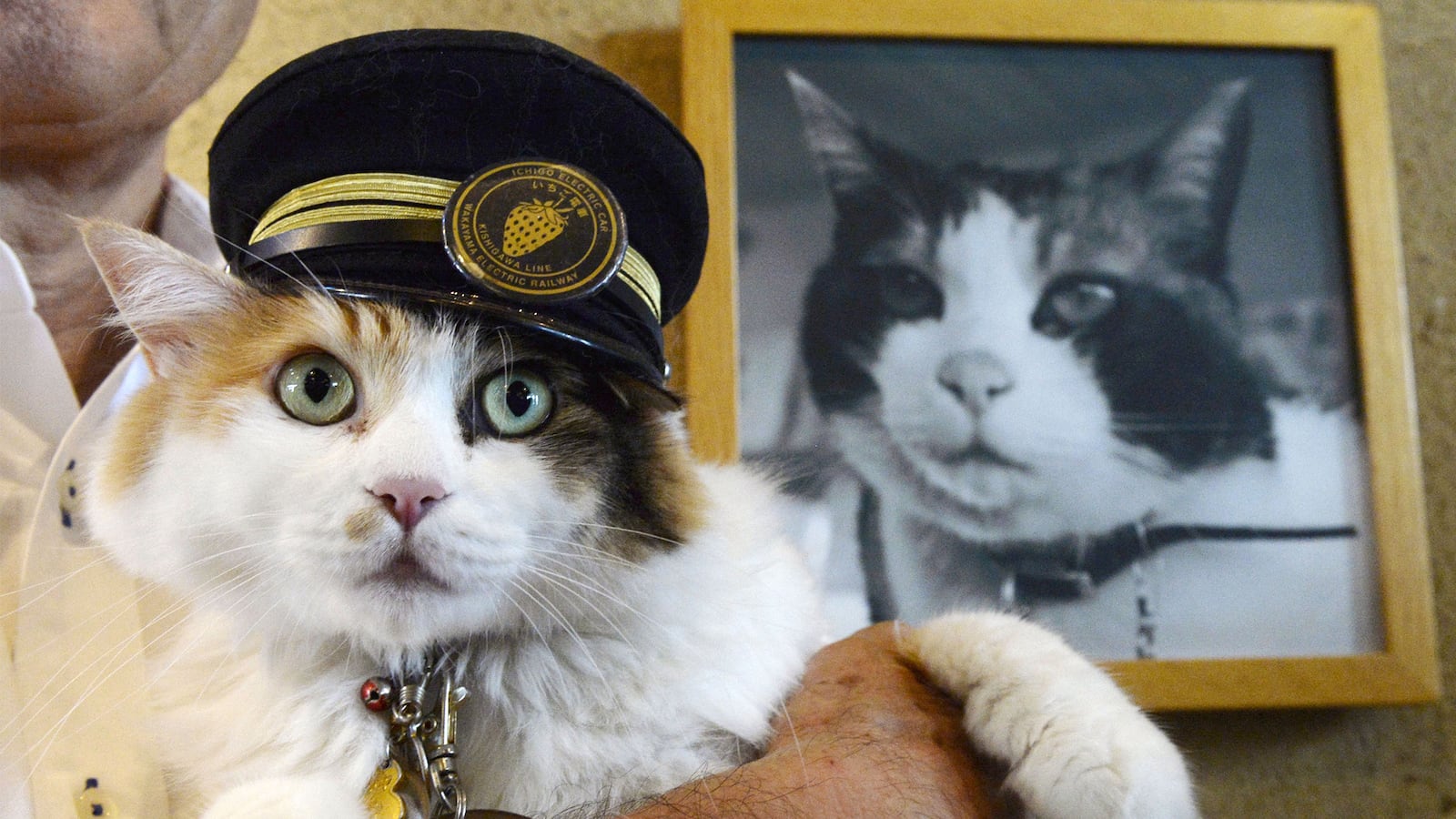Japan’s newest railway stationmaster is named Nitama. She beat fierce competition for the prestigious position, rising through the ranks due to her qualified résumé, including a previous role as the stationmaster at Idakiso Station and an assistantship under the former stationmaster at Kishi in the rural district of Kinokawa. She also had the edge over other candidates based on her willingness to wear a hat.
Nitama is a cat.
She is not the first cat to serve as a stationmaster in Japan. Far from it. In fact, she is only where she is today due to her groundbreaking predecessor, Japan’s most famous cat stationmaster, Tama. Tama passed away in June at the ripe old age of 16—or about 80 in cat years—and Nitama was appointed after the traditional 50-day mourning period of the Japanese Shinto religion.
The tradition of a cat stationmaster goes back to January 2008, when officials of the Wakayama Electric Railway promoted Tama to the “super station master” of the Kishi station. The company president and the mayor of the town were both in attendance at the ceremony. The promotion made Tama “the only female in a managerial position” at the train company.
But Tama was not just the only female in an executive position at this Japanese railway company; she was also the first cat to make it to senior management position. In January 2010, railway officials promoted Tama to the post of “Operating Officer” in recognition of her saving the local Kishigawa Line from bankruptcy, by turning the spot into a tourist attraction, luring costumers with her coy cuteness. Japan Times claims that her presence at the station increased ridership and added a projected 1.1 billion yen ($8.9 million) to the local economy in her first year.
Tama had a rags-to-riches story. Raised by a group of stray cats that used to live close to Kishi Station, she was eventually adopted by an informal station manager, and soon became the official manager herself. After she passed, thousands of people gathered at Tama’s funeral where she was enshrined as a goddess in the Shinto religion, which has a variety of gods, including animals.
A photo of Tama, standing proud in a navy cape and stationmaster’s hat, was placed on an altar where fans came to pray and leave offerings.
Wakayama Electric Railway president Mitsunobu Kokima told CNN why Nitama is qualified to be Tama’s successor.
“The reason I appointed Nitama as a successor to Tama is that she had teaching experience from Tama directly,” he explained. “Tama was very mild and she seldom got angry, though she was strict with her subordinate Nitama.”
The famous cat stationmasters are not surprising for anyone who knows a bit about Japan—cats are deeply rooted in Japanese culture, from being honored during what is known as the Edo Period (1615–1867) to today’s current cat obsession in Kawaii, Japan’s infamous cult of cuteness.






